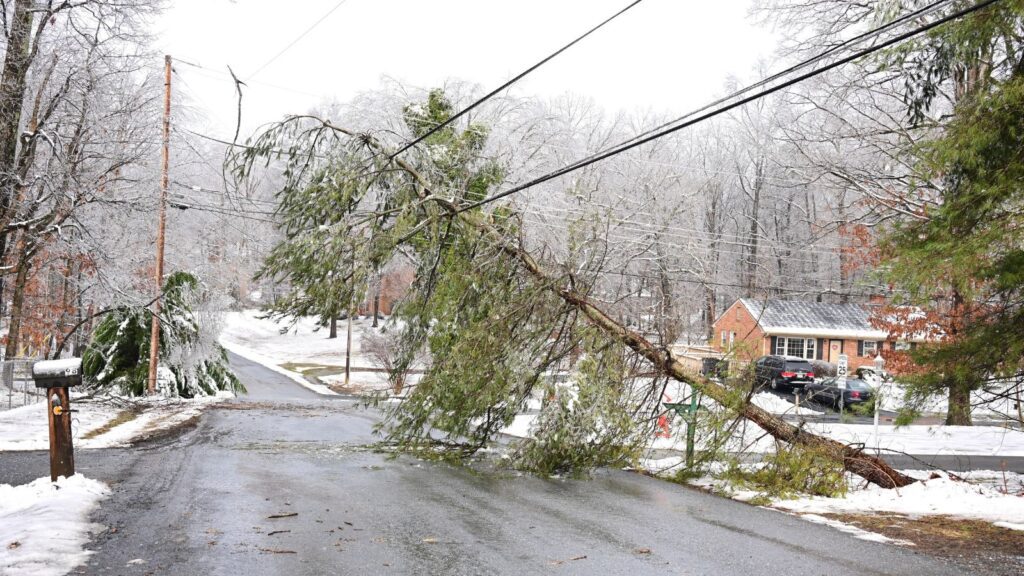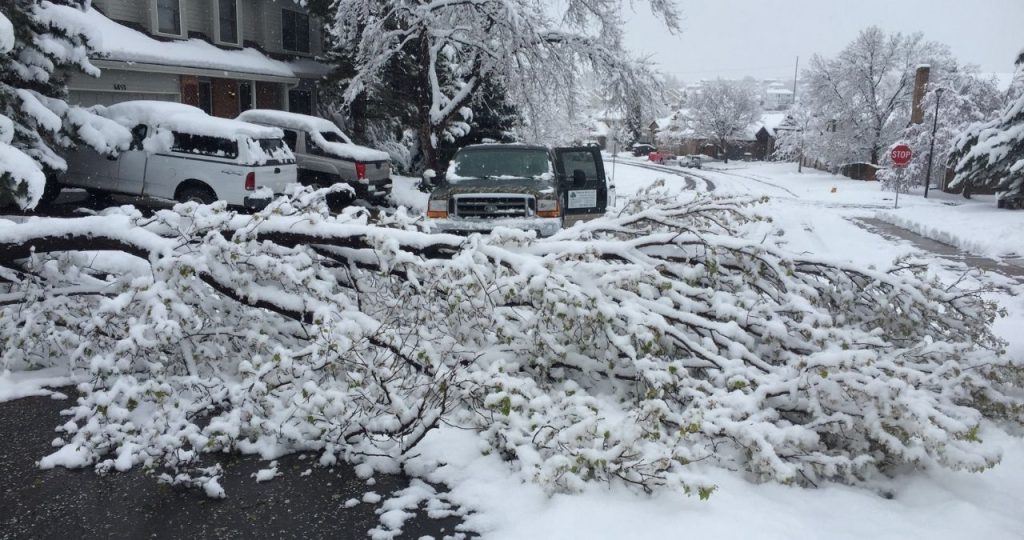A pre-holiday tree safety inspection is a smart step to protect homes from winter storm damage. Winter storms bring ice, snow, and strong winds that can break weak branches or topple unhealthy trees. Checking trees for damage, disease, or instability before the holiday season helps prevent costly repairs and keeps families safe.
Storms often strike when holiday activities are in full swing, increasing the risk of winter damage and electrical issues from fallen branches. Inspecting trees early allows for necessary pruning or removal of dangerous limbs, reducing the chance of falling branches during bad weather. This proactive approach safeguards property and supports peace of mind throughout the season.
Taking time to inspect and care for trees before winter storms also protects the overall landscape. Healthy trees are less likely to cause damage to roofs, power lines, or vehicles. Preparing now helps ensure a safer home environment as winter weather approaches.
Pre-Holiday Tree Safety Inspection: Protecting Your Home from Winter Storm Damage
The Importance of Pre-Holiday Tree Safety Inspections
Inspecting trees before the holiday season is critical to identify hazards that could cause damage during harsh weather conditions. This process helps secure a home’s structure, safeguard its residents, and maintain essential services like electricity.
Preventing Winter Storm Damage
During winter storms, the combination of snow and ice can overload weak branches and cause them to collapse. A detailed pre-holiday tree safety inspection can identify soft spots, rotting wood, or early decay that might worsen as temperatures drop. Spotting these issues early helps prevent water penetration and decay inside tree trunks, extending their life.
Professional inspectors check for cracks, fungal growth, and dead wood as early warning signs. Addressing issues in advance protects a home’s landscape and lowers repair expenses after harsh weather.
Protecting Your Home and Family
Weak trees can endanger people and property when extreme cold and snow hit. Regular inspection before the holidays protects loved ones and allows removal of unstable trees near buildings or power lines.
An unsafe tree may lean toward the house or have root damage, increasing its chance of falling. Early detection allows for pruning or removal to prevent accidents.
Families gain peace of mind knowing their home is less vulnerable. A simple tree safety check is a key step in reducing injury risks during heavy weather events.
Reducing Risk of Power Outages
A pre-holiday tree safety inspection helps identify hazardous branches that could cause power failures during winter storms. Trimming dangerous limbs reduces the chance they will fall onto power lines, ensuring that heating systems and holiday lights continue operating through severe weather. The inspection also ensures that weather stripping around windows and doors maintains efficiency by reducing drafts when storms strike.
Utility companies recommend scheduling annual inspections to prevent outages and protect electrical infrastructure. Maintaining safe tree growth near lines enhances safety and reliability during extreme cold and high-demand winter conditions.
Essential Steps for Inspecting Trees Before Winter
Taking a systematic approach through your pre-holiday tree safety inspection reveals problems that might be hidden. Examine soil conditions, assess tree placement, and verify that branches are clear of power lines or roofs that could be vulnerable to water damage.
Identifying Weak or Damaged Branches
Weak or damaged branches are a main cause of tree damage in storms. Look for cracks, decay, or signs of strain caused by high wind exposure. Branches that hang lower than normal or have loose bark are signs of weakness.
Pay attention to branches that rub against each other. These can wear down bark and invite pests or disease.
Removing weak branches early reduces the risk of them breaking off in heavy snow or strong winds. Use proper pruning techniques or hire a professional for safety and tree health.
Checking for Signs of Disease or Infestation
Disease and pests weaken trees and make them vulnerable in winter. Look for discolored leaves, unusual growths like cankers or mushrooms, and sticky sap.
Inspect the trunk and branches for holes or sawdust, which could mean boring insects. Wilted or dead sections of the tree also indicate problems.
Identifying and managing these issues before winter helps prevent further damage. Treatments or removal of affected parts might be necessary.
Assessing Tree Proximity to Buildings and Power Lines
Trees close to homes, garages, or power lines pose fire risks. Branches can break and cause structural damage or power outages during storms.
Measure the distance between tree limbs and nearby structures. Branches within 10 feet of power lines should be professionally trimmed.
Consider tree placement and growth patterns. Trees planted too close to buildings may need pruning or removal to avoid future hazards.
Evaluating Soil Stability and Root Health
Healthy roots anchor trees securely against wind and weight from snow. Check the soil around the tree base for signs of erosion or instability.
Look for exposed roots, mushrooms, or fungus around the base. These can signal root damage or decay.
Walk around the tree to see if it leans, which may indicate weak roots or poor soil support.
Mulching and proper watering before the winter season strengthen root systems and lower the chance of uprooting during heavy snow and ice.
Professional Support and Long-Term Tree Maintenance
Proper tree care before winter helps prevent damage and keeps trees healthy over time. Regular checks, cautious pruning, and expert advice all play key roles in safeguarding a home from falling branches or weakened trees during storms. Consistent watching also allows early action if problems arise.
When to Consult a Certified Arborist
A certified arborist should be contacted if a tree shows signs of disease, damage, or instability. They can identify issues that are not obvious to the untrained eye. Examples include root rot, pest infestations, or cracks in the trunk and limbs.
If a tree is close to a structure or power lines, an arborist can assess the risk safely. They also advise on proper care or removal when the tree poses a danger. Hiring experts ensures work is done correctly and follows safety rules.
Safe Pruning and Preventive Care
Pruning removes dead or weak branches that could break in a storm. It reduces the risk of falling limbs and promotes strong growth in healthy parts of the tree. Proper pruning techniques avoid damage to the tree.
Preventative care includes treating diseases early and watering the tree correctly before the ground freezes. Mulching helps protect roots from cold temperatures. Using the right tools and timing prevents harm and improves tree resilience.
Monitoring Trees Throughout the Winter
Monitoring trees during winter helps catch new hazards early. Snow and ice weight often cause branches to bend or crack. Regularly checking branches, especially after storms, helps spot issues fast.
Removing snow buildup carefully can reduce breakage. Trees with thin or damaged branches should get extra attention. Timely intervention can prevent bigger problems in the spring when the tree starts growing again.
Frequently Asked Questions
Inspecting trees before winter storms involves checking branches, trunk, and root stability. Knowing what to look for can help prevent property damage and ensure safety. Proper timing and expert help make the process more effective.
What are the key steps to inspecting a tree for potential hazards before a winter storm?
Start by looking for dead or broken branches that could fall during strong winds. Check the trunk for cracks, splits, or signs of decay. Inspect the base for root damage or soil erosion that might weaken the tree’s stability.
How can I determine if a tree near my home might be at risk of falling during a storm?
Look for leaning trees or those with roots visibly lifting out of the ground. Trees with large dead branches or hollow trunks are also risky. If the tree loses multiple small branches when shaken, it might be weak.
What professional services are available for assessing tree safety?
Certified arborists offer detailed safety inspections and can identify hidden problems. They provide pruning, bracing, or removal services to reduce risks. Some companies also offer emergency storm damage assessment.
When is the best time to conduct a tree safety inspection before the holiday season?
Late fall, before winter weather begins, is ideal. This timing allows action before ice, snow, or strong winds hit. Inspections done by early November give enough time for pruning or other preventative care.
What preventive measures can be taken to protect trees and property from winter storm damage?
Prune weak or dead branches well before storms hit. Use cables or braces to support vulnerable limbs if needed.
Keep trees healthy with proper watering and fertilizing through fall. Remove obviously dangerous trees early, and watch for heat sources to keep pipes from freezing because pipes can freeze, which can lead to costly repairs.
Schedule a professional pre-holiday tree safety inspection ahead of time. Combine this with regular weather stripping, roof maintenance to prevent ice damming, and responsible use of space heaters to reduce fire and water damage risks.
Are there specific signs of tree disease or decay that homeowners should look for before a storm?
Yes. Look for fungus or mushrooms growing at the base or on the trunk. Soft, crumbly wood when touched signals decay. Discolored or dropping leaves out of season also indicate health issues. These signs mean the tree may fail in severe weather.
Tree Services of Omaha – Tree Removal Services
Tree Services of Omaha, Nebraska is a full-service tree care provider that offers a wide range of arborist services, including but not limited to: Tree Removal Services, Tree Trimming, Tree Pruning, Tree and shrubs Shaping, Stump Removal, Stump Grinding, Emerald Ash Borer Treatment, Arborist Consultations, Systemic Tree Injection (Tree Healthcare).
Contact us today for a free estimate!



